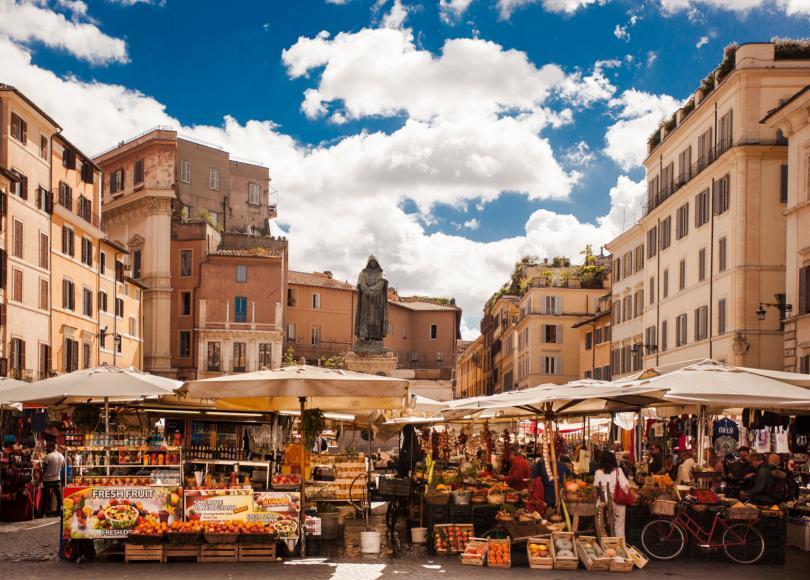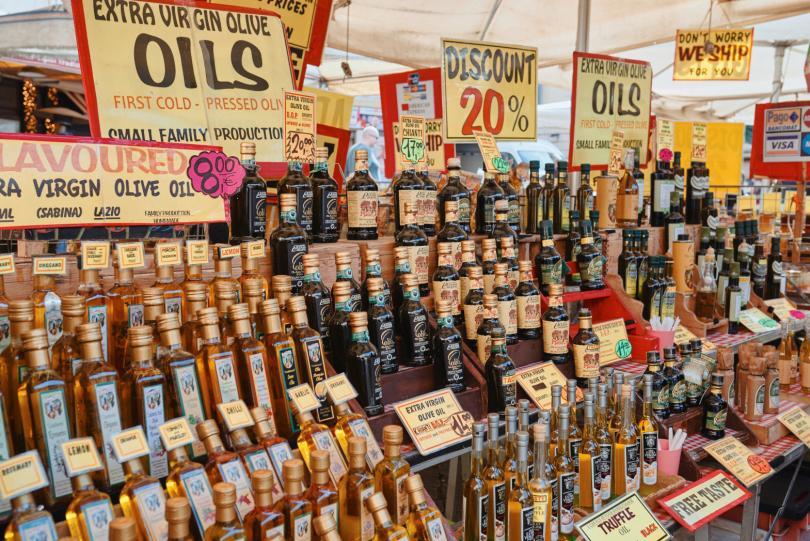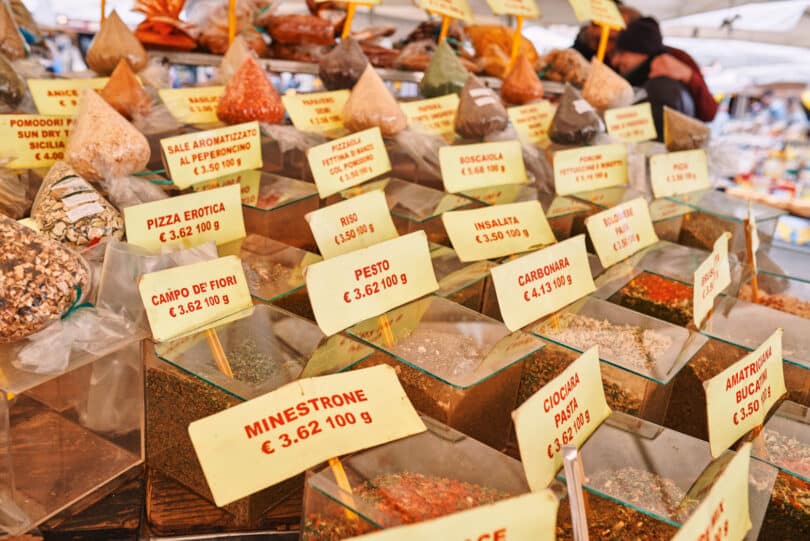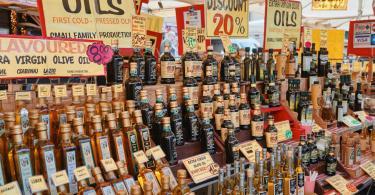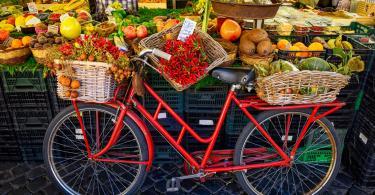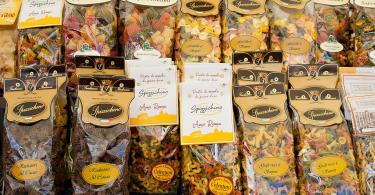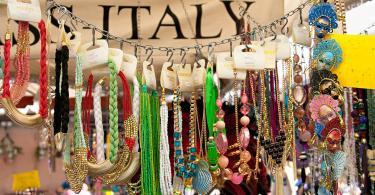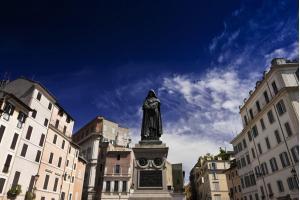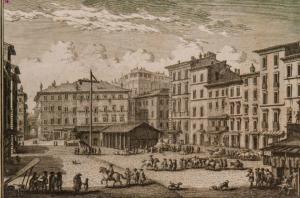Campo de’ Fiori was once the plateau of the Theater of Pompey, the first brick theater built in Rome (in 55 B.C.). Nearby buildings have curved foundations inherited from the theater structure. For 500 years, Campo de’ Fiori remained one of the great sights of Rome, but by the fifth century, it had fallen into ruin.
In the Middle Ages, the Orsini family used pieces of ancient Pompey’s theater to build a fortress. In the early 14th century, in place of Pompey’s ancient theater complex stood a square that was the center of medieval Rome. Later it became a place of public execution. (hence, a campo, not a piazza). Campo de’ Fiori has been a market place since 1869, with attractive old stalls and canvas shades.
Rome is probably at its most Roman on the »field of flowers« with its colourful market. Every morning, deep green spinach is piled next to dark red tomatoes that taste just as fabulous as they look. Fishmongers offer huge tuna fish, lobsters and mussels; other stands sell fresh chickens and turkeys of imposing size.
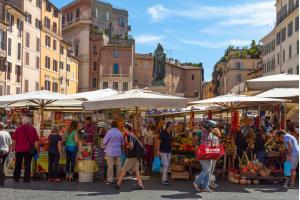
Campo de’ Fiori in Rome, Italy. Field of Flowers is one of the main squares of Rome, lively both day, market, and at night, when the terraces are filled with tourists.
In the early afternoon, the square gets a thorough cleaning and is then once more the domain of the flower sellers and strolling visitors. Even if you do not want to buy a colourful bouquet on the Campo de’ Fiori, it is well worthwhile sitting in one of the street cafes just to enjoy the atmosphere: the warm Mediterranean colours of the old palazzi with charming roof gardens, the light, and the abundance of fresh fruit and vegetables from the countryside around Rome.
Accessible from the Via della Cancelleria, this square lined with tall old houses offers one of the best postcard views in Rome. It is best enjoyed in the morning, when its typically Mediterranean market is in full swing.
Campo de’ Fiori: Monument to Giordano Bruno
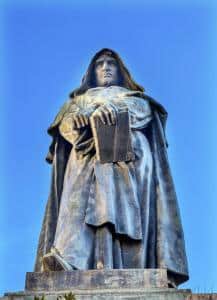
Giordano Bruno Statue Campo de’ Fiori Rome Italy. Bruno was heretic burned at stake in Campo de’ Fiori. Statue by Ferrari in 1889
The monument to Giordano Bruno (work of Ettore Ferrari – 1887). in the middle of the piazza is a reminder that it was once a place of execution. The Dominican monk Bruno was found guilty of heresy by the inquisition, but was not willing to rescind his teachings and was therefore burned alive on 17 February 1600. The medallions below his bronze statue bear the names of other men regarded as heretics by the Catholic church. 400 years after Bruno’s death, the church acknowledged its error.
Timeline:
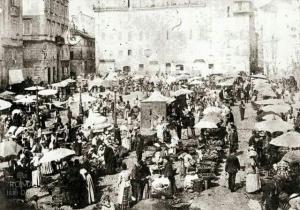
Campo de’Fiori (1880). Source: Pinterest
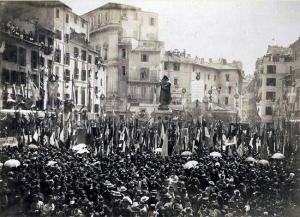
Campo de’Fiori, 1889. Source: Pinterest
Walking from Colosseum:
Campo de’ Fiori set in the center of Rome, 2,1 km from (26 min walk) from Colosseum. Bus: 46, 62, 64.

